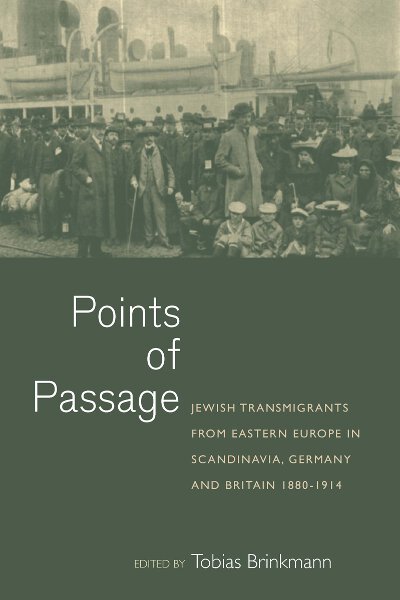
Email Newsletters
Sign up for our email newsletters to get customized updates on new Berghahn publications.
Points of Passage
Jewish Migrants from Eastern Europe in Scandinavia, Germany, and Britain 1880-1914
Edited by Tobias Brinkmann
186 pages, 15 tables & figures, bibliog., index
ISBN 978-1-78238-029-0 $135.00/£104.00 / Hb / Published (October 2013)
eISBN 978-1-78238-030-6 eBook
Reviews
“This slim volume is packed with facts and insights into a little known subject, which has recently, however, been the object of much research.” · Journal of Borderlands Studies
“This is a major contribution to our understanding of a process which in a few decades radically transformed the geography of the Jewish world.” · Antony Polonsky,United States Holocaust Memorial Museum and Brandeis University
“This volume will prove to be a very valuable addition to the growing literature on Eastern European migrations as a passage into Western Europe and beyond between 1880 and World War II.” · Dorothee Schneider, University of Illinois at Urbana-Champaign
“[In this volume] migration takes a novel point of departure: a focus on the phenomenon of transmigrants as a key to understanding wider patterns of migration…The scholars contributing to this volume of essays concretize in rich detail, as we as readers and students of the subject have never really been able to do before, what trans-Atlantic migration actually felt like to those involved. The departure of Brinkmann and his colleagues from older migration studies models is striking.” · Eli Lederhendler, Stephen S. Wise Professor of American Jewish History and Institutions, The Hebrew University of Jerusalem
Description
Between 1880 and 1914 several million Eastern Europeans migrated West. Much is known about the immigration experience of Jews, Poles, Greeks, and others, notably in the United States. Yet, little is known about the paths of mass migration across “green borders” via European railway stations and ports to destinations in other continents. Ellis Island, literally a point of passage into America, has a much higher symbolic significance than the often inconspicuous departure stations, makeshift facilities for migrant masses at European railway stations and port cities, and former control posts along borders that were redrawn several times during the twentieth century. This volume focuses on the journeys of Jews from Eastern Europe through Germany, Britain, and Scandinavia between 1880 and 1914. The authors investigate various aspects of transmigration including medical controls, travel conditions, and the role of the steamship lines; and also review the rise of migration restrictions around the globe in the decades before 1914.
Tobias Brinkmann is the Malvin and Lea Bank Associate Professor of Jewish Studies and History at Penn State University. His recent publications include Sundays at Sinai: A Jewish Congregation in Chicago (University of Chicago Press, 2012); Migration und Transnationalität: Perspektiven deutsch-jüdischer Geschichte (Schöningh, 2012); and “Why Paul Nathan Attacked Albert Ballin: The Transatlantic Mass Migration and the Privatization of Prussia’s Eastern Border Inspection, 1886–1914,” Central European History (2010).




